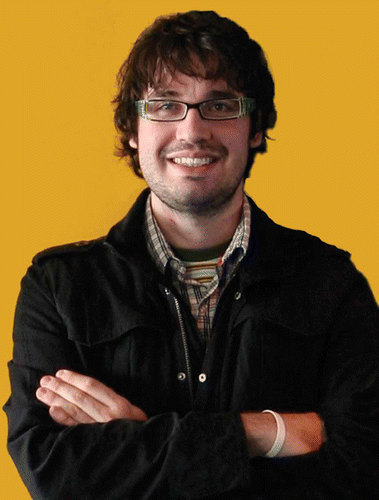Dr Alberto Marini (1981–2010)
The young Physical Chemist, Alberto Marini, left us on 20th December 2010 at his house in Pisa. The unexpected and tragic circumstances of his death suddenly opened the eyes of the scientific community which was around him. Despite his excellent talent and promising scientific studies, Alberto was very afraid about the future and oppressed by the unfortunate situation of young people as well as by the undefined role of his generation in creating the Society of the Future.

Alberto Marini was born on 27th May 1981 in Prato (Italy); he was the only son in a family of well-known furniture makers. Since his childhood, Alberto was very active and curious. His aptitude as an experimentalist was clear since that early time. After Primary and Secondary Schools, Alberto attended the Liceo Scientifico ‘Amedeo di Savoia Duca d'Aosta’ in Pistoia where he graduated with the highest grades in 2000. During the years of High School, Alberto developed his exceptional skills as a Chemist, learned the basic principles of Science and of the Experimental Method; he was among the best Italian students at the National Chemistry Olympiad (at Livorno in 1998, at Pontedera in 1999 and at Rosignano Solvay in 2000).
After this education, he had no doubts as to where he should go next and so entered the ‘Dipartimento di Chimica e Chimica Industriale’ (DCCI) at the University of Pisa. Here he won his Master's degree in 2005 with the grade 110/110 cum Laude. His last two years as an undergraduate student were fundamental to his development as a Physical Chemist. In fact, he spent one year in the group led by Professor Carlo Alberto Veracini studying several thermotropic liquid crystals (some of which he synthesised himself) by means of nuclear magnetic resonance (NMR), exploring new multinuclear methodologies. He was so fascinated by liquid-crystalline materials, their rich variety of mesophases and their molecular origins that he decided to continue with their investigation. He then won Doctoral studentships at both the DCCI and the ‘Scuola Normale Superiore’ in Pisa. In the event, he selected the extremely prestigious School, where he started his PhD studies in January 2006. During the following three years, Alberto developed a powerful combined approach to analyse NMR data and density functional theory (DFT) molecular computations so as to obtain the orientational order, conformational and structural properties of liquid crystalline materials in a self-consistent way. During this creative period, Alberto was a visiting student in several laboratories around the World. His longest periods abroad were spent in Canada, working together with Professor Ronald Dong, and in Stockholm, under the supervision of Profesor Arnold Maliniak. His wide-ranging work encompassed calamitic and discotic liquid crystals, bent-core nematogens and touched the current major topic of the biaxial nematic phase.
In May 2009, he successfully defended his PhD thesis at the ‘Scuola Normale Superiore’ of Pisa under the supervision of Professor Carlo Alberto Veracini and, as external referees, Professor Geoffrey R. Luckhurst and Professor Arnold Maliniak. His Doctorate was also awarded with the highest marks, 70/70 cum Laude.
Since 2009, Alberto moved more towards computational studies and, in fact, he worked as a post-doctoral researcher in Professor Benedetta Mennucci's group in Pisa at the DCCI. Here his task was the application of DFT methods to the calculation of spectroscopic and molecular properties in complex systems, in which he naturally included liquid crystals.
Alberto's idea had been to establish a bridge between computational and experimental physical chemistry and, in a similar way, among scientists working in these fields. Despite his youth, Alberto was able to deal with many different technical and theoretical problems and, most significantly, he could easily manage national and international collaborations. This ability stemmed not only from his enthusiasm for science and his intuitive understanding of it. His sense of style, his easy-going manner and his ability to converse freely with both his peers and his seniors were of equal importance.
His loss will be keenly felt not only by his family and friends but also by his scientific colleagues and collaborators. The future of liquid crystal science will be all the poorer because of his departure.
Valentina Domenici (University of Pisa)
Geoffrey R. Luckhurst (University of Southampton)
Acknowledgements
We are grateful to Alberto's wife, Jeannette Lucejko, and to his parents for their kindness and support while preparing this obituary.